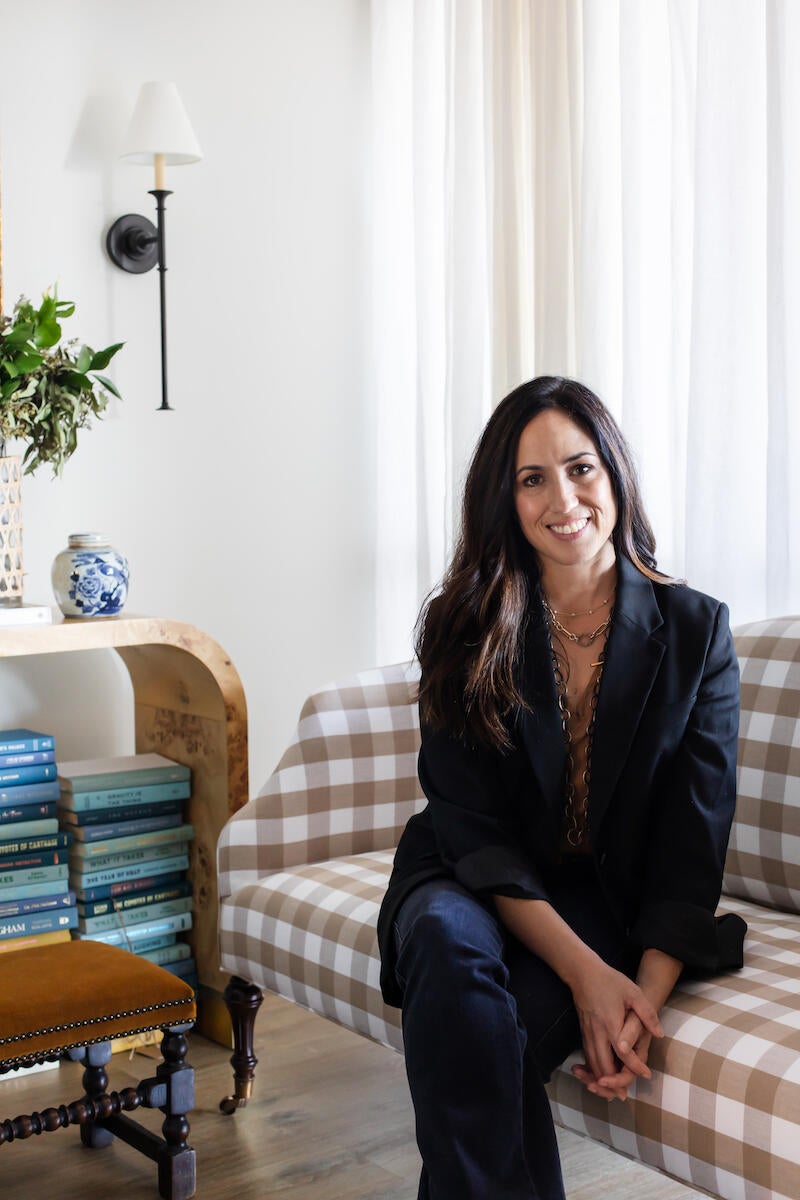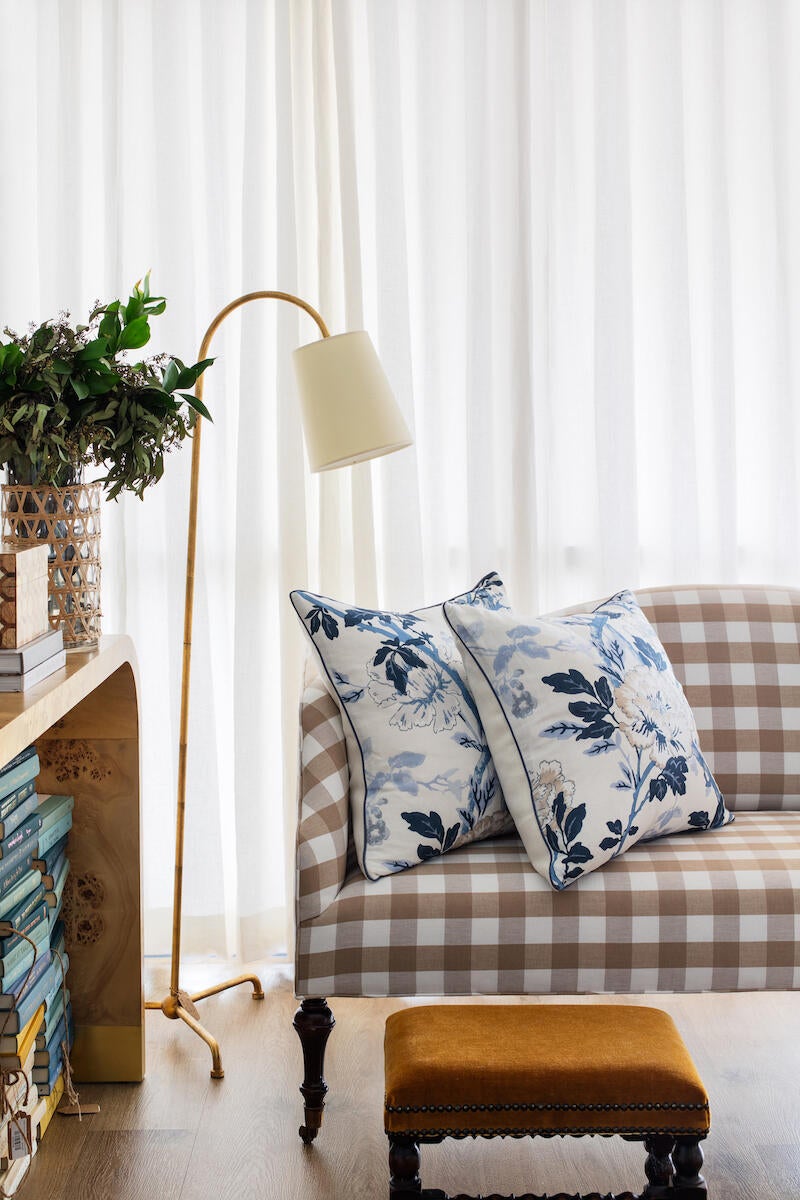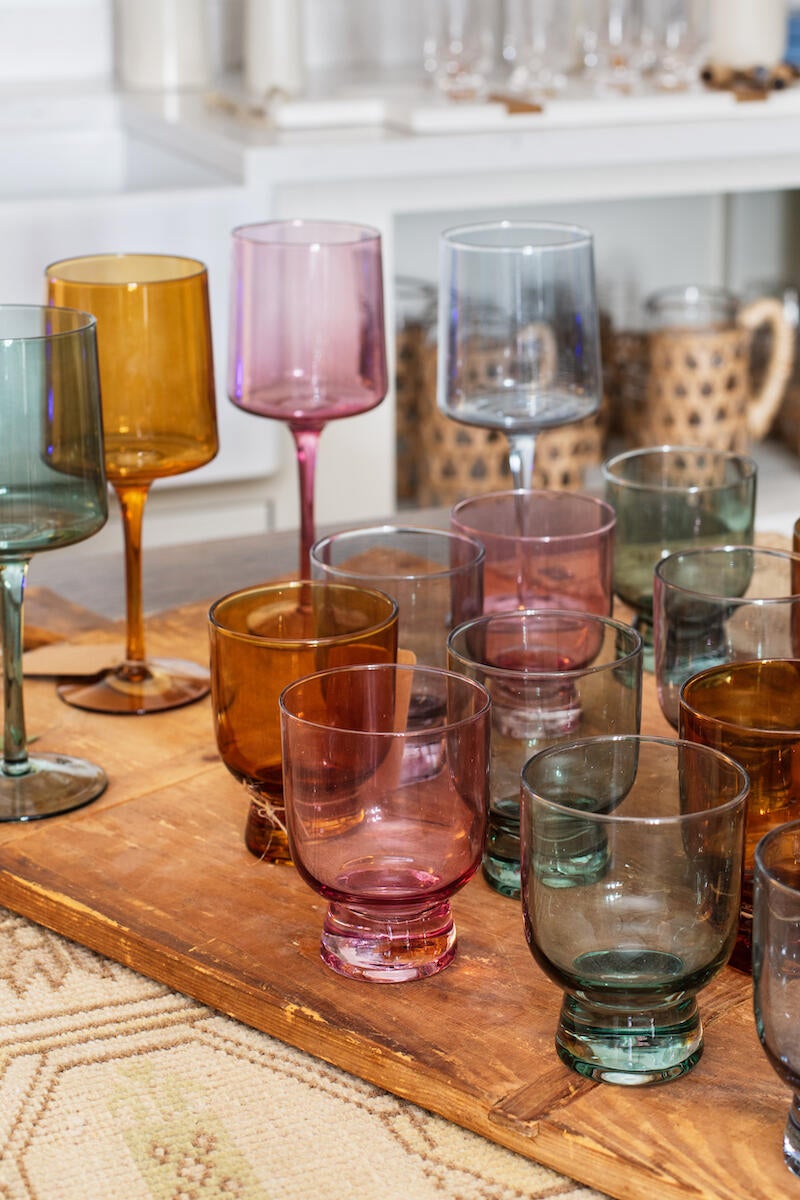In Business of Home’s series Shop Talk, we chat with owners of home furnishings stores across the country to hear about their hard-won lessons and challenges, big and small. This week, we spoke with Austin-based interior designer and retailer Laura Pankonien.

Since arriving in Austin for college and founding her design-build firm, The Pankonien Group, in 2004, Pankonien has watched the funky city transform into a white-hot housing market. But still, she felt that the retail scene was lacking, making it nearly impossible for the average shopper to find special pieces for their home without a designer’s help. In April 2022, she opened Bleu by TPG to bring some of that access to Austin—and even with nearly two decades of experience, she was shocked by how difficult it was to operate retail in a pandemic. Ahead, Pankonien discusses her changing city, how “naive” she was about brick-and-mortar challenges, and why Bleu has renewed her passion for the industry.
What was your career like before opening the shop? I’ve had my full-service design business, The Pankonien Group, for about 15 years. We are a design-build firm, with the whole-house furnishings projects, [but] I had always wanted to open a shop. I had given up my office space about five years ago, when my kids were in high school, so my staff and I were office-ing out of a room in my home. As we hit the pandemic and started growing a little, we thought that we should go back to an office. I wondered what we could do if we had our studio in the back of a retail space and some kind of showroom in the front. We went from there.
It opened last year?
Yes, April 2022. We had a soft opening, letting the trade folks that we have relationships know. Then, little by little, the community has gotten to hear about us, and we’ve gotten a following. It’s been really nice. We have a lot of people just drop by. We’re in kind of an upscale area of Austin, West Austin, near a lot of our client projects, so it’s always nice to have clients pop in and shop around.
That was my next question: Who is your typical customer? What is the balance of trade and foot traffic and regulars?
I would say currently it’s probably 80 percent regular retail shopper, 20 percent trade. A lot of our trade is more interested in what I thought our shopper would be interested in—more of the high-end, unique art pieces, accessories for bookshelves, things that they can use to finish an install. We carry some midrange price points for the casual shopper.
But in general, I feel like what the retail shoppers really love about us is that traditional look—just beautiful, simple, clean lines with those vendors that they may have seen in some of their magazines but that you really can’t find in Austin. It’s difficult to shop in Austin, even for a trained designer. The look leans more young and urban modern, a West Elm look. There’s not a lot of that grandmillennial look that I love, that I’ve always decorated with. They come into our store and they see fabrics from Peter Dunham or Carolina Irving or Heather Chadduck. They can pop in and get one pillow, and they don’t have to engage in a designer for an entire project.

Since we’re on the topic, you’ve been operating in Austin through so much change. Can you talk about how Austin and its design scene have changed? And how is it possible that a place with so many new homeowners does not have more design stores?
Austin is really a unique place. I grew up in Houston for the most part, and Houston’s a huge city with lots of great shopping. When I showed up at [the University of Texas at Austin] in the 1990s, I was a teenager, but I was like, “Where does everybody go to find things?” Even though we’re developing more districts for shopping, it’s still difficult. As far as the trade goes, we probably shop in Houston or Dallas markets, and then a lot of custom work gets done in town.
Since I started my business 15 years ago, that’s the part where clients are always nodding their heads right along with me—how does anybody get anything done here without an interior designer? We have an RH in The Domain design district, but for people who are just wanting to get a collected look in their home, I think it is a lot tougher. It puts me in contact with a lot of great clients who maybe, in a larger city, would be trying to pull the look together themselves.
Is there a vendor relationship that you treasure?
We love working with the Supply showroom here in Austin. They have so many of the small vendors and makers that we love to work with. I support the trade showrooms here, and 90 percent of our sourcing is done here, even though we have relationships with folks in Dallas and Houston, Atlanta and New York.
Cocoon, which used to be Stockton Hicks Laffey, is the showroom where we do a lot of our shopping for larger vendors. And we love James, Meredith Ellis’s showroom, for some of the smaller makers. That look is harder to find.
So most sourcing comes from showrooms and markets. Do you also use e-platforms like Faire and Juniper?
For our full-service clients, we source the gamut—all the major furnishing vendors through trade showrooms, Round Top, antiques markets in Houston and Dallas. For Bleu, it’s a little bit different. The shop is 500 square feet, and in order to keep the focus, we give it a lot of boundaries. We don’t carry a lot of furniture in that space; it’s a lot of accessories, which we’ll source from Faire. But my sourcing list is really tight—the things in the store are vendors that are near and dear to the projects that we do. I don’t carry a lot of tchotchkes, like “Oh, maybe that would be a quick seller.” The shopper gets a true taste of what a full-service client would get from us. Every pillow is designed with care, with those smaller makers that we incorporate into our projects, and the store’s styled in home vignettes.
Is there an object or a category that seems to fly out the door?
Our custom pillows, and antique carpets that we source from Round Top. Any one-of-a-kind items, like antique cutting boards, original art. Those are the items that everybody is interested in.

What about your own favorite pieces in the store?
Oh, my gosh, I have so many. I am the worst store owner on the planet from that perspective. There’s a piece of original art in the store [right now], and I was telling my store manager, “Take that off the wall and put something else there, because somebody’s going to buy it and I’m going to be heartbroken.” It’s a Birmingham artist, just a gorgeous piece. It’s usually a piece of original art that gets my attention.
What is your approach to e-comm like? Of course, you’ve only been open for a couple of months.
We tried to baby-step into it, make it as easy and as manageable as possible for our staff. I’ve been surprised by what sells on e-comm, because we have not taken the approach of free shipping or lots of sales. I price-shop us against our online competition, and I feel like we offer a good value. But at the same time, I try to look at it from today’s shopper’s perspective, which could be an Amazon consumer. I’m just trying to make it a clean experience.
One thing that I’ve really enjoyed doing—and I’ve been surprised by how many shoppers appreciate this—we’ll reach out with a personal email. It’s not a form letter. Within 48 hours, our staff say, “Thank you for shopping with us. We’re so glad you’re interested in this item. We’re in the middle of packing it now.” We’ll exchange emails back and forth with our shoppers, and it’s been a really great way to start a relationship.
How much do you worry that people will walk through the store, then look up a product online and buy it for less?
I’m definitely aware of that. I don’t worry about it too much, especially in this supply chain climate. It’s still difficult to get product. And by the same token, it’s like, OK, well that may be the only thing I have for that retail shopper. And we do have another shopper for that item.
You mention the supply chain. You launched this business in the pandemic, so how have some of these issues impacted you?
Even though we launched in April 2022, we’d been planning the store since November 2021. I had signed my lease, I had sourced all my vendors, and I was all set to go. Everyone was telling me, “Yes, we can ship within six weeks.” Then we start placing orders, and everything’s delayed, delayed, delayed. I was honestly shocked and really disappointed in a lot of those vendors who were not communicating with our showrooms as well as they could have. We were probably missing 30 percent of the inventory that we had ordered until right before the holidays. Now I feel like those things are starting to click. I feel more confident in lead times than I did a few months ago, but that’s from the retail perspective. I’m still seeing long lead times on the full-service side, with my client orders.

Did the delays translate to less merchandise on the floor? How did you manage that struggle for the customer?
It definitely meant less merchandise on the floor. The great thing about being a small shop is that you can pivot a little bit better than if I had a 50,000-square-foot showroom. It was like, you know what? We’re going to source. We’re going to do more pillows. The things that I can control—I can order that fabric. We’re missing pottery, but we can get more glassware. Just filling holes.
And then as far as setting expectations, that was why I held off on starting e-commerce until things started coming in on a more reliable basis. I did not want to leave that kind of taste in the mouth of our shopper, especially with our first launch. We did a mock-up of the e-commerce website where we were putting the template together and had all of our pictures in. Since we didn’t have the inventory, it would just say “out of stock, out of stock” on everything. I’ve seen websites like that. I’ve shopped websites like that for clients, and it’s so discouraging. I didn’t want to do that to our shopper, so I held firm: We’re not launching e-commerce until things start coming back in stock. I think it made for a better launch, for sure.
Were there things that really surprised you about launching retail? After you’ve been in this world for so long, and you know Austin so well?
I’ve learned a lot. I’ve learned that I was naive. I thought, “Oh, this will parallel everything we’re doing with the studio business.” I learned that this is its own business, and I needed to have special staff for that business. I needed to have time in my calendar just for that business.
It’s reaffirmed some of the things that I did know from my client work—that a huge percentage of shoppers like to lean on an expert opinion before they invest in a piece. Even though I have a really dependable and awesome store staff, people do like to shop when I’m there. Sometimes I can better tell the story of the item, and they appreciate getting to know what led me to put that item in my shop. Again, that kind of piggybacks on the amount of time that the business requires.
The other thing I’ve learned about myself is that I really did want to be a shop lady. I love it so much! It’s the joy of my day, honestly, whenever I’m in the shop, so I do try to take at least one to two hours a day at the front, or in and out from the studio where we’re working on projects. I love to move things around. I love to talk to the shoppers. In these past few years, when everything’s been so hectic and so delayed and the work just feels so heavy, it brought back that joy of design.
Homepage image: Bleu by TPG opened in April 2022 | Courtesy of Avery Nicole Photography




























